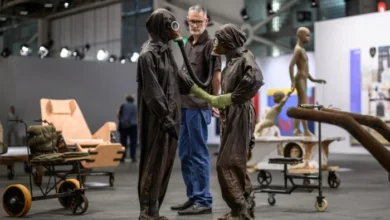By: Faheem Aamer
If the literature is not produced in course of economic and scientific evolution, it’s nothing but a waste of words. This won’t be an understatement if we credit Voltaire for depicting the scientific, economic, political, and social conditions of his era.
In the opening chapter of the novel, the author successfully depicts the difference in lifestyles of the two classes. It’s the comparison of the lives of some humans living in palaces and many, who exist outside these “great walls”. One interesting fact about the great authors of all the times is how they portray their characters through words as Voltaire did in Candide, satisfying all five imageries of the reader. When he introduces Cunegund and Dr. Pangloss, he very carefully selects their names and this we saw decades after Voltaire in Maxim Gorky’s novel the Mother.
When he talks about Baron’s dwelling, he is not actually talking about architectural grandeur, but he is comparing the lives of the people on both sides of the wall. This was an era when philosophy was being influenced by a thought that “behind every creation or invention, there is always economic reasoning”. Though the theory and philosophy of evolution were given by Charles Darwin afterward, but through Dr. Pangloss, he strictly criticizes the papal power working against the powers of evolution or favoring the powers of stagnation.
In the era of enlightenment, a certain class of humans was inventing power looms, optical telegraphs, and so many other things for their economic needs, and hence in evolution, it was called the era of the industrial revolution, exactly like we are living in the era of satellite exploration or maybe “satellite exploitation”.
It is one of very few novels that allow the readers to swim by its flow. Candide is usually appreciated for its strong criticism on the atrocities of fundamentalism, feudalism, imperial structures. It supports “poetic licensing”.
“Faith, comrade,” said one of them to the other, “yonder is a well
made young fellow and of the right size.”
Though Renaissance is an age in the history of Literature, which freed the expression from medieval trends, yet another logical fact is that mythological frameworks were truly denied in the era of enlightenment and this was done by Voltaire through his novel, Candide. In the same chapter, the lead characters define modesty as an economic limitation, not a religious virtue, and this is an undeniable scientific fact now.
Through Bulgarians, the author defines nothing but the atrocities of wars….
“Never was anything so gallant, so well accoutred, so brilliant, and
so finely disposed as the two armies. The trumpets, fifes, hautboys,
drums, and cannon made such harmony as never was heard in Hell
itself.”
So, who was ripped off by the Bulgarians? Miss Cunegund, a character? No. It was not just a character ripped off to death by some other characters, but it was a life torn away by the war. Here, he also talks about the natural catastrophe and just calls a spade, a spade and denies the mythological fantasies.
“Nothing is more probable,” said Candide; “but for the love of God
a little oil and wine.”
“Probable!” replied the philosopher, “I maintain that the thing is
demonstrable.”
Now, this is the time, when a reader of the 21st century can feel the sprinkling thoughts of the author, which was never possible through the Chaucerian courteous words. This proved him to be no less than a political scientist in the days to come. It is purely a science, beyond confused mysticism as it stands on the next level of philosophical optimism.
Thinking analytically, what is the leading thought in this novel, which makes a great combination of science and art? The lead character, Candid is shown as a kind-hearted, but naïve youth. His mentor, Pangloss, teaches him that their world is “the best of all possible worlds.” This actually means that many other worlds exist in the cosmos, proven later on. So, this thought makes this novel, written with a scientific approach.
After being banished from his adopted childhood home, Candide travels the world and is affected by many tragic happenings, all the while pursuing security and following Cunegunde, the woman he loves. His faith in Pangloss’ absolute enthusiasm is repeatedly tested. Candide is more of a channel for behaviors and events that surround him than just a character. His opinions and actions are determined almost entirely by the influence of outside factors. This establishes again the author’s scientific approach, which fills the gap between two major eras; the renaissance and the era of Charles Darwin.
When you study him in-depth, you can easily find that he actually narrates the light of climate change as in his era, the steam engine appears as one of the most momentous productive forces in history. It was created by human intelligence, not by some divine power. This shifts author’s thoughts on the spiral shift that technology had brought through evolution. The author, through Pangloss, exposes the mode of production and new tools of production of his time as how they affected human life. He talks about the nature of the relationship between many productive forces, considering the steam engine a symbol of progress. Steam power then arose as a result of contradictions in the relations between capital and labor.
Ecological evolution needs to be understood in the context of building and breaking new relationships in terms of production. Elaborating his “constructivism”, a reader today can approach a theory of fossil-fuel technologies as material manifestations of capitalist power, which was becoming a hurdle for the productive evolution of humanism in terms of literature.
Since rest of his text is mostly a part of the author’s articulation details, we can conclude our argument in this great novel that there is no danger to human life as far the scientific progress is concerned, and this is what the author depicted by denying the “mythological delusions”.
The writer is a researcher, professor, and literary critic, currently working with EMRA News.
faheememra@gmail.com






